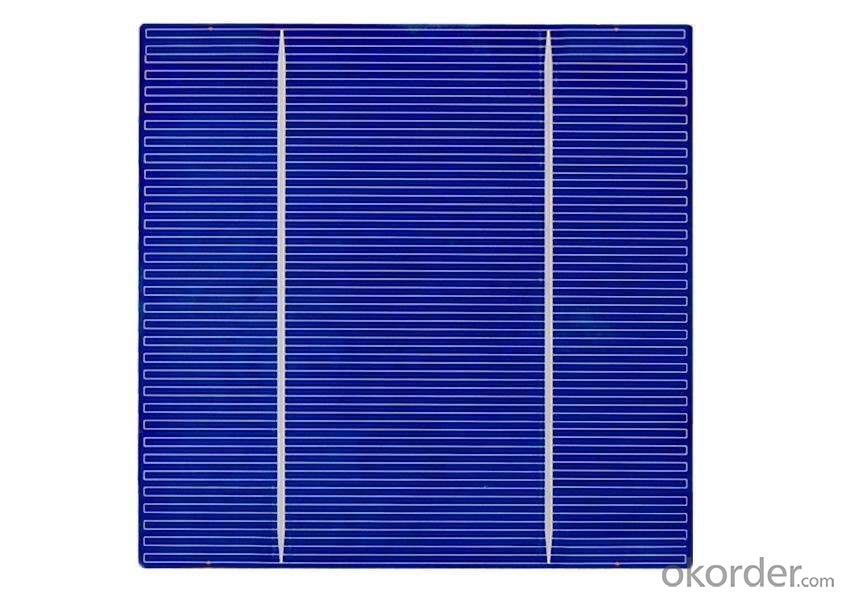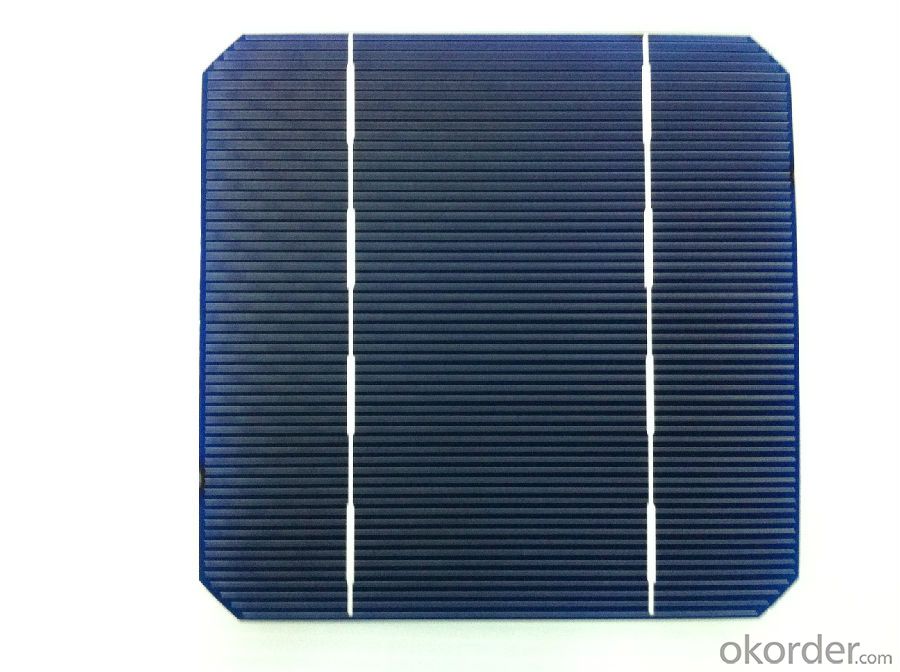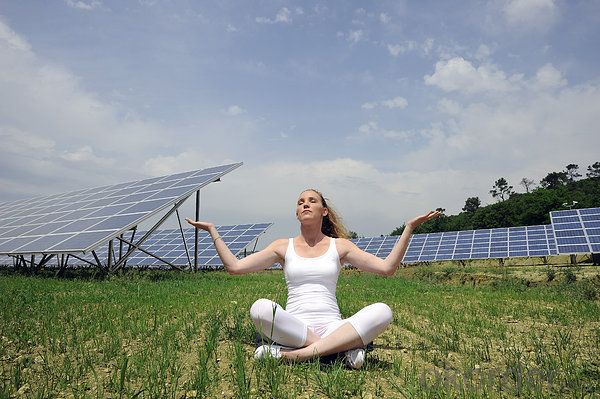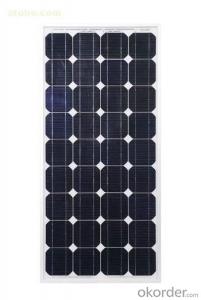270W Solar Panels 230W-320W with High Efficiency Best Price
- Loading Port:
- China main port
- Payment Terms:
- TT OR LC
- Min Order Qty:
- 1000 watt
- Supply Capability:
- 100000 watt/month
OKorder Service Pledge
OKorder Financial Service
You Might Also Like
Structure
A PV module is a packaged, connected assembly of typically 6×10 solar cells. Solar PV panels constitute the solar array of a photovoltaic system that generates and supplies solar electricity in commercial and residential applications. Each module is rated by its DC output power under standard test conditions, and typically ranges from 100 to 320 watts. The efficiency of a module determines the area of a module given the same rated output – an 8% efficient 230 watt module will have twice the area of a 16% efficient 230 watt module. There are a few solar panels available that are exceeding 19% efficiency. A single solar module can produce only a limited amount of power; most installations contain multiple modules. A photovoltaic system typically includes a panel or an array of solar modules, an inverter, and sometimes a battery and/or solar tracker and interconnection wiring.
Feature
1. 10 years limited product warranty
2. 15 years at 90% of the minimal rated power output
3. 25 years at 80% of the minimal rated power output
Picture




Specification
ITEM NO.: | Poly 156*156 cell ,60pcs . Power range from 230Wp-260Wp | |||||||||
Maximum Power(W) | 230 | 235 | 240 | 245 | 250 | 255 | 260 | |||
Optimum Power Voltage(Vmp) | 29.4 | 29.5 | 29.7 | 30.1 | 30.3 | 30.5 | 30.7 | |||
Optimum Operatige Current(Imp) | 7.83 | 7.97 | 8.08 | 8.14 | 8.25 | 8.37 | 8.48 | |||
Open Circuit Voltage(Voc) | 36.7 | 36.8 | 36.9 | 37.1 | 37.3 | 37.5 | 37.7 | |||
Short Circuit Current(Isc) | 8.52 | 8.59 | 8.62 | 8.65 | 8.69 | 8.73 | 8.78 | |||
Solar Cell: | 156*156 Poly | |||||||||
Number of Cell(pcs) | 6*10 | |||||||||
Brand Name of Solar Cells | JA Cell, Bluesun Cell | |||||||||
Size of Module(mm) | 1650*992*40/45/50 | |||||||||
Cable & Connector Type | Pass the TUV Certificate | |||||||||
Frame(Material Corners,etc.) | Aluminium-alloy | |||||||||
Back sheet | TPT | |||||||||
Weight Per Piece(KG) | 19.5KG | |||||||||
FF (%) | 70-76% | |||||||||
Junction Box Type | Pass the TUV Certificate | |||||||||
Tolerance Wattage(e.g.+/-5%) | ±3%, or 0-3% | |||||||||
Front Glass Thickness(mm) | 3.2 | |||||||||
Temperature Coefficients of Isc(%) | +0.04 | |||||||||
Temperature Coefficients of Voc(%) | -0.38 | |||||||||
Temperature Coefficients of Pm(%) | -0.47 | |||||||||
Temperature Coefficients of Im(%) | +0.04 | |||||||||
Temperature Coefficients of Vm(%) | -0.38 | |||||||||
Temperature Range | -40°C to +85°C | |||||||||
Surface Maximum Load Capacity | 5400Pa | |||||||||
Allowable Hail Load | 23m/s ,7.53g | |||||||||
Bypass Diode Rating(A) | 12 | |||||||||
Warranty | 90% of 10 years, 80% of 25 years. | |||||||||
Standard Test Conditions | AM1.5 1000W/ 25 +/-2°C | |||||||||
Packing | carton or pallet | |||||||||
1*20' | 14 Pallets / 316pcs | |||||||||
1*40'STD | 25 Pallets / 700pcs | |||||||||
FAQ:
Are you a trading company or manufacturer? | Manufacturer with factory |
What kinds of filter do you produce? | It covers for air filter,oil filter,fuel filter for car and truck |
Is Customized filter available? | Yes,please offer your required specifications and drawing |
Do you Accept OEM service? | YES! |
what’s your delivery terms? | FOB (2)CFR (3)CIF |
What's your Delivery Time? | 1)generally the samples will be sent immediately by the air express in 3-5 days if the goods are in stock |
2)Normally within 30 days,please confirm with us before order! | |
What's the Payment Terms? | Usually,30% as deposit,70% before shipment by T/T |
Western Union acceptable for small amount. | |
L/C acceptable for large amount. | |
Scrow ,Paybal,Alipay are also ok | |
How you pack products? | Normally,plastic bag inside and carton outside .We'll do according to customers' requirement |
What's your available port of Shipment? | Normally, Tianjin Other ports available but you should afford extra charges. |
Trade and Market | Main Market Western European 20% |
- Q:How Much energy does Solar Panel Produce,and How long can Solar Panels go without maintenance.
- Solar panels come in many kinds, using a variety of technologies and sizes, but the most common is still the crystalline silicon type. The power produced is variable, but the better ones you can buy approach 20% efficiency, and the peak energy from the sun is 200W/m^2 (Watts per square meter). This only occurs when the panel is lined up with the sun on a clear day with the sun high in the sky. The efficiency is also affected by how the electrical energy is taken from the panel, and the temperature of the panel. In the full sun the temperature approaches 60C, so the voltage drops. The links below provide a lot of information about such matters. A BP panel 50mm x 674mm gives a peak power of 20W. This is .07 square meters. As you can see this is very close to 20%. (The third link). However this is less in practice because the sun may not be full sun and may not be perpendicular to the panel. The output drops as the cosine of the angle to the sun, more or less. Even with peak sun this would produce only about 00W charging a 2V battery directly, unless an electronic Maximum Power Point Tracking (MPPT) charge control is used.
- Q:I have a rental property and use a 230-Volt 6-Amp Pool Pump.I would like to use a solar panel to run it when the house is empty, using mains power when guests are here.The building is in the Caribbean so plenty of sun!!I wanted to run it quot;directand not use batteries. Is this possible??What size panel would I need? A DC invertor too??Thanks!!
- Why don't you use the mains as the battery with net metering. That way you don't have to have two pumps, a DC pump for the solar and an AC pump for the mains. A 230 V, 6 A pump draws 3.68 kw. A typical solar panel produces about 400 watts so you would need about 0 solar panels which should run you about $20,000 US. Of course, you may not need to run the pump continuously but in order to use fewer solar panels for sporadic use, you would need the batteries or the net metering. Keep in mind that with the costs of the panels, you will be paying about 38 cents a kwh. Grid power usually costs around 5 cents a kwh.
- Q:I have in mind a small solar panel that could be plugged into a wall socket. Do I need a converter or some kind of interference between the two power sources so there aren't any unpleasant explosions? I don't know much about this sort of thing so please be nice.
- No a solar panel puts out DC voltage like a car battery and you house uses Ac voltage generated voltage yes you need a converter to use the dc on an ac unit depends on the Amperage out put of the solar panel
- Q:Can solar panels be installed on wearable devices?
- Yes, solar panels can be installed on wearable devices, but their effectiveness may be limited due to the small surface area available for solar absorption. Additionally, the amount of energy generated may not be sufficient to power the wearable device continuously. However, advancements in solar technology may make it more feasible and efficient in the future.
- Q:If a solar panel (using 36 3x6 solar cells) puts out 60 watts, how many panels would I need (for a house) if I use a max of 2300 kWh in a month? I checked my electric usage for the past 2 years and the kWh is usually lower but I wanted to use the most kWh used (2300) for my question. Thanks!
- Good question. Something to keep in mind is that modern solar electric works _alongside_ the grid, so you don't need to displace your entire 2300 kWh. The best financial return, if any, might come at a point where you generate only 500, 000, or 500 kWh per month. How many panels you need strongly depends on your location. Speaking for the location of my house in San Jose, Ca, that amount of usage would be about a 2 kW array, and if you divide 60 into that, you get 200 panels. In a perfect location, you would need slightly less, in a northern state, you might need double that. If this was a real project, you would probably not use 60-watt panels. The choice of panels is not simply a matter of getting enough watts. 2 kW is a large system today for residential. The usual advice is to go for energy efficiency first, then consider solar after the usage is down.
- Q:How about using Solar Panals to provide the electrical power to separate the H2 from the O? H2 would be fed into the engines carburator like a gas/air mixture ratio, but H2/air mixture ratio instead. How would you control the exact measurements?
- H2 has more energy per weight – but requires twice the volume of fuel. It is unsafe to transport as a liquid or gas (usually in a carrier medium of some sort) Solar panels are expensive (low output per $) and expire after some use. They are dirty and energy inefficient to make too. However: hydroelectric, wind, and sea technologies may offer some improvements in costs with oil prices as high as they are.
- Q:What sort of maintenance is required for solar panels....?
- All panels should be cleaned to function best. Brush or wash off dirt and leaves. They should be checked for structural integrity and lack of rust. Solar Thermal panels should be checked for signs of leaks and/or discharge from pressure relief valves. Solar Photovoltaic should be checked for electrical function and grounding.
- Q:This is the cenario. Your yearly energy use comes by mail and it states that the total amount of energy used your household is 7000kWh.Then you make the decision of switching to get solar panels. The question is what area should your solar panel be given that the average annual length of daylight is 2.0.
- It is not that simple. There are 3 main types of solar cells. Monocrystalline silicon is the most efficient and produces the smallest solar cells, and therefore the smallest panels. Poly-crystalline (or multi-crystalline) silicon produces the next most efficient type of cells and are a popular choice. Amorphous (or thin-film) silicon uses the least amount of silicon and also produces the least efficient solar cells. This means thin film system take up more area than the other two; an important factor to consider in relation to possible future upgrades; i.e. if you'll have enough space left to do so. The North (in the Southern hemisphere) or South (in the Northern hemisphere) facing roof collects the most energy. So this biases the roof area required. Your energy usage can be changed. Hot water (a major energy user) could be better using direct solar heating with peak demand boosting, either from mains or solar. There are other possibilities, either to reduce demand or to provide energy from other sources. Not all sunshine hours are equal. Hours around midday are far more productive than hours later in the day. This must be factored in.
- Q:I was looking at thin flexible solar panels as solar panels 500w a option to upgrade a 20w solar panel I have permanently mounted to the roof of a home made camper van.Why I was thinking flexible is at just 2mm thin they can be glued down and being flexible they will follow the contour of the rounded shape of the roof of my camper (boxy standard solar panel spoils the lines a little)Another reason is no glass to brake when traveling on dirt tracks(though I am surprised mine hasn't broken yet after thousands of km on corrugated dirt roads). Finally there is a weight saving at only /3 the weight or less then a standard glass panel.There are different grades of flex PV some of the more expensive ones are very flexible with extremely thin backing at around .5mm The ones I was looking at are cheaper and at around 2mm with a thin flexible aluminum backing.$250 is about the going rate for 20w OKorder job. Below is a pic of a smaller one 60w or so.Has anyone had any experience with them?
- Guide okorder /
- Q:Me and my wife just saw an ad on TV about going solar and saw the money we can save every month... any here have solar panels? How much do you save every month on energy bill? Is it true that your energy meter will spin backwards? lol
- Yes, it can save money, but really depends on your individual situation. There are three main factors - how much sun you get, how much electricity you use, and how much electricity costs locally. We have solar, and the meter does spin backwards. Actually, it's a digital meter, so it counts down instead of up. The system covers essentially all our electrical usage over the year, and our electric bill is about $5 a month, because of minimum charges by the electric company. That shouldn't be used as a comparison to your situation, though, since every house is different.
1. Manufacturer Overview |
|
|---|---|
| Location | |
| Year Established | |
| Annual Output Value | |
| Main Markets | |
| Company Certifications | |
2. Manufacturer Certificates |
|
|---|---|
| a) Certification Name | |
| Range | |
| Reference | |
| Validity Period | |
3. Manufacturer Capability |
|
|---|---|
| a)Trade Capacity | |
| Nearest Port | |
| Export Percentage | |
| No.of Employees in Trade Department | |
| Language Spoken: | |
| b)Factory Information | |
| Factory Size: | |
| No. of Production Lines | |
| Contract Manufacturing | |
| Product Price Range | |
Send your message to us
270W Solar Panels 230W-320W with High Efficiency Best Price
- Loading Port:
- China main port
- Payment Terms:
- TT OR LC
- Min Order Qty:
- 1000 watt
- Supply Capability:
- 100000 watt/month
OKorder Service Pledge
OKorder Financial Service
Similar products
New products
Hot products
Related keywords






























